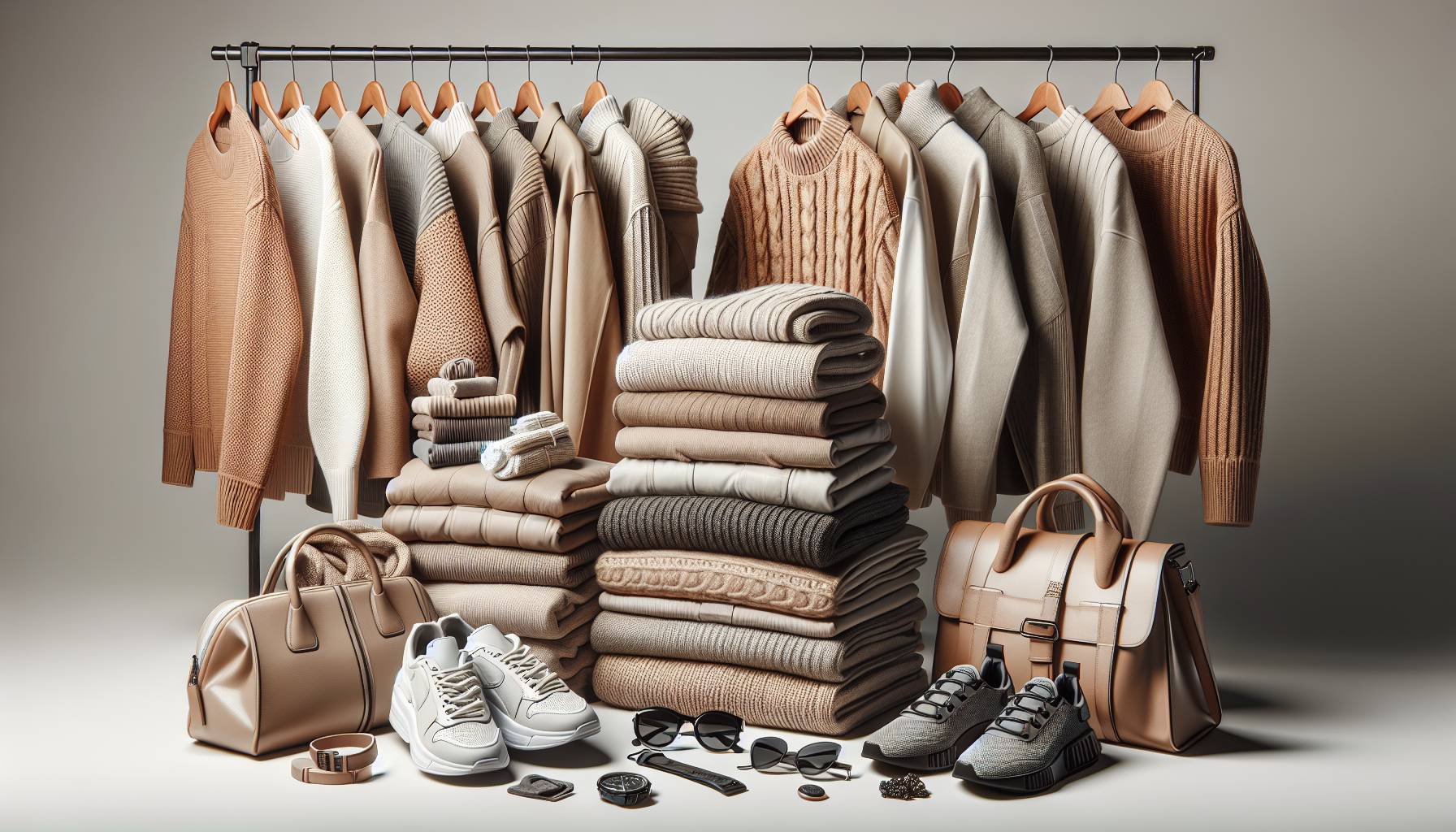Luxury-inspired strategies in high-street fashion
High-street fashion brands across Australia are increasingly adopting strategies traditionally associated with luxury fashion houses. These tactics, once exclusive to high-end labels, are now being used to elevate the image and appeal of more accessible retailers. From curated seasonal collections to limited-edition drops, high-street labels are embracing exclusivity and sophistication to attract a style-conscious audience.
One of the most noticeable shifts is the investment in high-production runway-style presentations. Brands that once relied solely on lookbooks or online catalogues are now staging fashion shows that rival those of luxury designers. These events not only generate buzz but also position the brand as a serious player in the fashion industry, blurring the lines between high-street and high-end.
Another strategy borrowed from luxury fashion is the emphasis on storytelling and brand identity. High-street retailers are crafting compelling narratives around their collections, often drawing inspiration from art, culture, and global fashion capitals. This approach helps to create a sense of aspiration and emotional connection with consumers, encouraging brand loyalty in a competitive market.
Collaborations with well-known designers and influencers have also become a key tactic. By partnering with established names, high-street brands can offer exclusive pieces that carry the cachet of luxury design, without the hefty price tag. These collaborations often sell out quickly, reinforcing the desirability and trend-savvy nature of the brand.
In addition, attention to detail in fabric selection, tailoring, and packaging has improved significantly. While still maintaining affordability, many high-street labels are now using higher-quality materials and more refined construction techniques. This focus on quality not only enhances the product but also aligns with the growing consumer demand for value and longevity in fashion purchases.
These luxury-inspired strategies are helping high-street fashion brands in Australia and beyond to stay relevant in an ever-evolving retail landscape. By adopting the polish and prestige of designer labels, they are redefining what it means to be fashionable on a budget.
The rise of creative direction in affordable retail
Affordable fashion retailers in Australia are increasingly recognising the value of strong creative leadership, a concept long embraced by luxury fashion houses. The appointment of creative directors—once a hallmark of high-end labels like Chanel or Gucci—is now becoming a strategic move for high-street brands aiming to elevate their design credibility and brand identity. These creative leads are not just overseeing collections; they are shaping the entire aesthetic and vision of the brand, ensuring consistency across campaigns, store layouts, and digital platforms.
By bringing in talent with backgrounds in design, art direction, or even luxury fashion, high-street retailers are able to inject a fresh perspective into their offerings. This shift is evident in the more cohesive and trend-forward collections seen in stores like Country Road, Witchery, and even fast-fashion giants like Cotton On. These brands are no longer just reacting to trends—they are setting them, thanks to the vision and direction provided by their creative teams.
Creative direction also plays a crucial role in storytelling. Through carefully curated lookbooks, editorial-style campaigns, and immersive in-store experiences, brands are crafting narratives that resonate with their target audience. Whether it’s a coastal-inspired summer collection or a minimalist winter edit, the creative director ensures that every element—from colour palette to casting—aligns with the brand’s identity and seasonal message.
Moreover, the rise of social media has amplified the importance of a distinct visual identity. Consumers today are highly attuned to aesthetics, and a strong creative direction helps brands stand out in a crowded digital space. Instagram feeds, TikTok campaigns, and influencer partnerships are all curated under the guidance of creative leads, ensuring that the brand’s voice remains consistent and compelling across all touchpoints.
This evolution in affordable retail reflects a broader shift in consumer expectations. Shoppers are no longer satisfied with just low prices—they want style, innovation, and a sense of connection to the brands they support. By investing in creative direction, high-street fashion labels are not only enhancing their design credentials but also building deeper relationships with their audience.
Balancing style and affordability for modern consumers
Australian consumers are increasingly seeking fashion that strikes the perfect balance between style and affordability. High-street brands are responding by refining their approach to design and pricing, ensuring that trend-conscious shoppers don’t have to compromise on quality or aesthetics. This delicate balance is achieved through a combination of smart sourcing, efficient production methods, and a deep understanding of consumer preferences.
One of the key strategies involves leveraging economies of scale to keep costs down without sacrificing design integrity. By producing larger quantities and streamlining supply chains, high-street retailers can offer garments that reflect current runway trends at a fraction of the price. This approach allows brands to maintain competitive pricing while still delivering pieces that feel fresh and fashion-forward.
Another important factor is the careful curation of collections. Rather than overwhelming consumers with endless options, many high-street labels are focusing on capsule wardrobes and seasonal edits that highlight versatility and cohesion. This not only simplifies the shopping experience but also encourages thoughtful purchasing, aligning with the growing demand for sustainability and mindful consumption.
Fabric selection plays a crucial role in achieving this balance. While luxury materials may be out of reach for budget-conscious shoppers, high-street brands are increasingly turning to innovative textiles that mimic the look and feel of premium fabrics. Blends that offer durability, comfort, and a polished finish are favoured, allowing consumers to enjoy elevated style without the luxury price tag.
To further enhance value, many retailers are investing in better garment construction and fit. Attention to detail—such as reinforced seams, tailored silhouettes, and quality fastenings—adds longevity to each piece, making them more appealing to shoppers who want their purchases to last beyond a single season. This focus on durability supports a shift away from disposable fashion and towards more considered wardrobes.
Customer engagement also plays a role in maintaining this balance. Brands are increasingly using feedback loops, such as online reviews and social media polls, to understand what their audience values most. This data-driven approach allows them to fine-tune their offerings, ensuring that each collection resonates with the tastes and budgets of their core demographic.
Ultimately, the success of high-street fashion in Australia hinges on its ability to deliver style that feels aspirational yet attainable. By combining trend-savvy design with accessible pricing and a commitment to quality, these brands are redefining what it means to dress well on a budget.
Luxury-inspired strategies reshape high-street fashion
High-street fashion retailers are stepping up their game by adopting strategies traditionally associated with luxury fashion houses. From Sydney to Melbourne, shoppers are noticing a shift—storefronts are sleeker, collections are more curated, and campaigns echo the sophistication of designer labels. This evolution is no accident; it’s a calculated move to stay relevant in a market where consumers crave both style and substance.
Brands like Zara and COS are now staging runway-style presentations, not unlike those seen at Paris or Milan Fashion Week. These events are no longer exclusive to couture; they’re becoming tools for high-street labels to showcase seasonal narratives and elevate brand perception. The goal? To create a sense of anticipation and desirability that mirrors the luxury experience.
Another key strategy is the appointment of high-profile creative directors. These industry insiders bring a designer’s eye to mass-market collections, ensuring that even the most affordable pieces carry a sense of intention and trend relevance. It’s a move that resonates with Australian consumers who are increasingly fashion-savvy and globally connected.
“It’s about creating a brand universe that feels aspirational but still attainable,” says a Sydney-based fashion buyer. “Consumers want to feel like they’re part of something elevated, even if they’re shopping on a budget.”
By integrating luxury cues—like limited-edition drops, premium fabrics, and editorial-style lookbooks—high-street brands are redefining what affordable fashion can look like. The result is a more refined, fashion-forward offering that appeals to women who want the polish of designer style without the price tag.
Blending exclusivity with accessibility
Australian shoppers are increasingly drawn to collections that strike the perfect balance between exclusivity and accessibility. High-street brands are responding by introducing capsule collections, often in limited quantities, to create a sense of urgency and uniqueness. These drops mimic the scarcity model used by luxury houses, but at price points that don’t alienate the everyday consumer.
Retailers like Witchery and Country Road are mastering this approach locally, offering elevated basics and trend-led pieces that feel premium without the premium markup. The use of tactile fabrics—think brushed cottons, soft linens, and eco-conscious blends—adds a layer of sophistication that resonates with women who value both quality and conscious consumption.
Collaborations are another key tactic. By partnering with emerging designers or influencers with a strong aesthetic identity, high-street labels are able to inject fresh energy into their collections while tapping into niche audiences. These partnerships often sell out quickly, reinforcing the idea of exclusivity while remaining accessible to a broader market.
“It’s not just about affordability anymore,” notes a Melbourne-based stylist. “It’s about offering something that feels curated and special—pieces that could sit comfortably alongside designer items in your wardrobe.”
Visual merchandising and in-store experiences are also evolving. Flagship stores in cities like Brisbane and Perth are being redesigned to reflect a more boutique-like atmosphere, with minimalist layouts, curated playlists, and personalised styling services. These touches elevate the shopping experience, making it feel more aligned with luxury retail environments.
- Limited-edition collections drive demand and exclusivity
- Premium materials and finishes enhance perceived value
- Designer collaborations offer fresh, fashion-forward appeal
- In-store experiences mirror luxury shopping environments
Ultimately, the fusion of exclusivity and accessibility is redefining the high-street landscape in Australia. It’s a strategy that not only meets the expectations of a more discerning female shopper but also positions these brands as serious players in the global fashion conversation.

